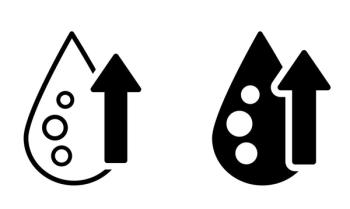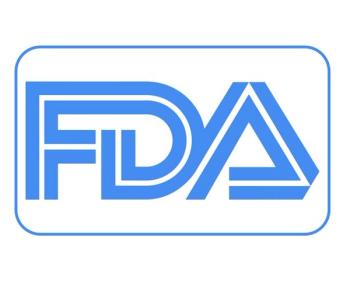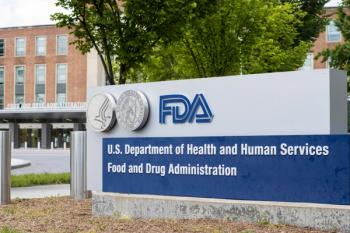
Dyslipidemia in High-Risk Patients:
ABSTRACT: Unlike revascularization procedures-which do not uniformly reduce future vascular events because they do not substantively alter the underlying atherosclerotic process-optimal lipid-lowering therapy can modify atherosclerotic risk. Recent trial data suggest that coronary plaque progression is delayed and the incidence of ischemic events is reduced when low-density lipoprotein cholesterol (LDL-C) levels are lowered to approximately 70 mg/dL in high-risk patients. Aggressive lipid reduction to achieve this goal is now a therapeutic option presented in the latest update to the National Cholesterol Education Program guidelines. Dietary modification remains essential for patients with coronary heart disease and should be initiated concurrently with lipid-lowering medications. Compared with other lipid-modifying agents, statins provide the most robust reductions in LDL-C levels. A statin may be combined with a bile acid sequestrant, niacin, a fibrate, or ezetimibe for more aggressive treatment.
Dyslipidemia is one of the major risk factors for coronary heart disease (CHD), which remains the leading cause of mortality among adults in industrialized nations.1-3 Nearly 13 million Americans have CHD, and many more harbor occult atherosclerosis.
Atherosclerosis is a complex process influenced by many risk factors; an elevated low-density lipoprotein cholesterol (LDL-C) level is one of the most important contributors. In an atherogenic milieu, oxidized LDL-C infiltrates the vascular intima, where it stimulates inflammation, endothelial dysfunction and, eventually, overt atherosclerosis. Although very high LDL-C levels (above 200 mg/dL) are strongly associated with an increase in CHD risk, atherosclerosis is not uncommon even in those with normal LDL-C levels (90 to 130 mg/dL).4,5
According to the third National Cholesterol Education Program Adult Treatment Panel (NCEP ATP III), the target LDL-C level for high-risk patients-that is, those with established CHD or CHD risk equivalents (such as diabetes, peripheral or cerebral vascular disease, or a predicted 10-year CHD risk of more than 20%)-is below 100 mg/dL.6 The European guidelines set the LDL-C target at lower than 115 mg/dL.7 However, the newly updated NCEP report-published following a number of recent large-scale trials- allows for initiation of LDL-C-lower- ing therapy in high-risk patients with pretreatment levels below 100 mg/dL (Box).8
The remarkable technologic in- novations of the past decade have revolutionized the care of patients with ad-vanced CHD. Coronary artery bypass grafting (CABG), percutaneous coronary intervention (PCI), and peripheral vascular procedures are done with increasing sophistication and safety. However, revascularization procedures are not uniformly associated with a reduction in future vascular events because in isolation they do not substantively alter the underlying atherosclerotic process. In contrast, atherosclerotic risk can be modified by optimal lipid-lowering therapy, and primary care clinicians are uniquely positioned to help their patients achieve this goal.
In this article, we review recent trials that have altered the approach to lipid treatment in high-risk patients and propose a rational framework for the selection of appropriate lipid-lowering therapies.
ADJUNCTIVE LIFESTYLE MODIFICATIONS
Regular exercise is recommended for all patients with a diagnosis of CHD or a CHD risk equivalent. A sedentary lifestyle is a major modifiable risk factor that is often overlooked in this era of effective pharmacotherapy for dyslipidemia. Exercise is a critical therapeutic lifestyle change that significantly attenuates cardiac risk by favorably altering lipid levels, lowering blood pressure, and reducing excess weight.9 It is best to encourage patients to increase activity within the structure of their daily lives, rather than to place undue emphasis on rigorous exercise programs.
Recommend immediate dietary modification to patients with a diagnosis of CHD or a CHD risk equivalent. These high-risk patients should strive to reduce their intake of saturated fats to less than 10% of total calories. In long-term studies, dietary modification was associated with an 8% to 15% decrease in serum LDL-C concentration.10 The risk of CHD can also be reduced by programs, such as the Mediterranean diet, that limit the intake of monounsaturated fat and emphasize the omega-3 fatty acids found in fish.11 One study demonstrated that maximal dietary therapy reduced LDL-C levels by as much as 25% to 30%.12
However, such robust reductions in cholesterol levels are rarely achieved in clinical practice. Dietary therapy, therefore, remains adjunctive and should not be viewed as a substitute for evidenced-based drug therapy. Too often, therapeutic lifestyle changes fail to achieve adequate cholesterol goals, which leads to patient disappointment and ultimately suboptimal adherence and outcomes. Dietary recommendations are most likely to be followed when provided concurrently with the initiation of lipid-lowering agents. Statins are considered first-line therapy in this setting.
STATINS
Statins inhibit the rate-limiting enzymatic step in hepatic cholesterol biosynthesis. The preponderance of evidence for vascular event reduction in high-risk patients is provided by randomized trials of statin therapy. Compared with other lipid-modifying agents, statins provide the most robust reduction in LDL-C levels (Table 1), which remains the principal therapeutic target in high-risk patients. Statins are well tolerated and are associated only rarely with hepatic dysfunction and rhabdomyolysis.
In the Scandinavian Simvastatin Survival Study (4S), a 35% mean reduction in LDL-C levels and a 42% reduction in cardiovascular mortality was observed with moderate doses of simvastatin in 4444 patients with CHD.13 The Cholesterol and Recurrent Events (CARE)14 and Long-term Intervention with Pravastatin in Ischemic Disease (LIPID)15 studies showed a reduced incidence of major vascular events with moderate doses of pravastatin even in patients with CHD who had normal or only mildly elevated total cholesterol levels.
The benefits of aggressive therapy. The optimal LDL-C level goal in high-risk patients has become a subject of controversy during the past few years. The ATP III target LDL-C level goal of 100 mg/dL has been questioned following recent trial results. Evidence that supports aggressive LDL-C lowering was demonstrated in a study that compared the effects of high- versus low-dose statin therapy in patients who had undergone CABG surgery. Intensive treatment to a mean LDL-C level of 93 mg/dL resulted in a 30% reduction in future revascularization procedures compared with the low-dose statin group in which the achieved LDL-C level was 136 mg/dL.16
The Myocardial Ischemia Reduction with Aggressive Cholesterol Lowering (MIRACL) trial assessed early initiation of statins in 3086 patients with acute coronary syndrome (ACS) randomized to 80 mg/d of atorvastatin or placebo.17 Statin-treated patients achieved a mean LDL-C level of 72 mg/dL and experienced a 26% relative risk reduction in recurrent ischemia within months. Even patients with pretreatment LDL-C levels below 100 mg/dL had lower rates of recurrent ischemia. Data from the Atorvastatin Versus Revascularization Treatment (AVERT) study confirm this result.18 Aggressive statin therapy that targeted a mean LDL-C level below 100 mg/dL reduced ischemic events in patients with stable angina pectoris more effectively than PCI.
The benefits of treating patients with CHD to well below ATP III goals have recently been given additional support. In the Reversal of Atherosclerosis with Aggressive Lipid-Lowering (REVERSAL) trial, patients with CHD were randomized to moderate- or high-dose statin therapy.19 Those treated with the high-dose statin experienced a statistically significant decrease in coronary plaque progres-sion ("regression") as determined by intravascular ultrasonography. The achieved mean LDL-C value in this group was 79 mg/dL. In contrast, patients treated with moderate-dose statin therapy showed an increase in plaque progression despite achieving mean LDL-C levels of 110 mg/dL.
Compelling data from 20,536 patients enrolled in the Heart Protection Study (HPS)20 demonstrated that all patients with CHD benefit from statin therapy, regardless of baseline LDL-C level. Within 5 years, statin treatment was associated with a 22% reduction in CHD events even among the nearly 3500 participants with a pretreatment LDL-C concentration lower than 100 mg/dL. The overall LDL-C level in this subgroup was reduced from a mean of 97 to 65 mg/dL.
The results of the MIRACL study were confirmed in the recent PROVE-IT trial, in which aggressive LDL-C lowering to a mean of 62 mg/dL compared with 95 mg/dL reduced CHD events by 16% among patients with ACS.21 The GRACE registry of patients with ACS confirmed a lower rate of future vascular events with inpatient initiation of statin therapy across a wide spectrum of cholesterol values.22
Finally, the results of the Collaborative Atorvastatin Diabetes Study (CARDS)23 were presented at the American Diabetes Association meeting in 2004.24 In this study, patients with diabetes (a CHD risk equivalent) who received atorvastatin experienced significant event reductions when treated to LDL-C levels well below 100 mg/dL.
Taken together, the data from these 8 trials confirm that the current NCEP guidelines were in need of amendment to reflect the growing evidence that supports aggressive LDL-C lowering in high-risk patients (Table 2). The recently published NCEP statement allows for statin initiation in high-risk patients even if the baseline LDL-C level is below 100 mg/dL.8 Specifically, a target LDL-C level of below 70 mg/dL may be considered for patients deemed at very high risk for future vascular events. The NCEP statement defines such patients as those with established cardiovascualar disease plus 1 of the following:
Multiple risk factors for CHD, especially diabetes.
Severe and poorly controlled risk factors, especially smoking.
Metabolic syndrome (triglyceride level higher than 200 mg/dL plus non-high-density lipoprotein cholesterol (HDL-C) level higher than 130 mg/dL and HDL-C level below 40 mg/dL).
Hospitalization for ACS.
The clinical trials show a clear log-linear relationship between LDL-C levels and the risk of CHD events (Figure). For every 1% reduction in LDL-C level, the relative risk of a major CHD event is reduced by 1%. Thus, a reduction in LDL-C level of at least 30% to 40% seems a prudent strategy for high-risk patients, regardless of baseline LDL-C level.
BILE ACID SEQUESTRANTS (RESINS)
Resins bind to bile acids (not cholesterol) in the small intestine, which interrupts the enterohepatic circulation of bile acids and increases the conversion of cholesterol to bile acids in the liver. Serum LDL-C reductions occur as a result of up-regulation of hepatic LDL-C receptors.
Bile acid resins include cholestyramine, colesevelam, and colestipol. Once widely used in dyslipidemia management, they are now reserved for adjunctive use with statin therapy when further lowering of LDL-C is required to achieve ATP III goals if the patient is already taking the maximum dosage of a statin. In adequate doses, the resins decrease serum LDL-C concentrations by 10% to 20%.25 They are taken twice daily with meals as a suspension in juice or water.
Bile acid binding causes intestinal fullness, gas, and constipation in 30% of patients. The dosage can be adjusted to minimize these symptoms. Cholestyramine can cause hyperchloremic metabolic acidosis in children or in patients with renal failure because chloride ions are released in exchange for bile acids. Resins may also reduce the absorption of vitamin D and other fat-soluble vitamins; this effect is usually negligible, except in children. Resins can inhibit the intestinal absorption of polar compounds such as warfarin, digoxin, levothyroxine, folic acid, and statins. To avoid this effect, these medications should be administered 1 hour before or 4 hours after the resin. An increase in soluble fiber intake, as part of a healthy diet, may augment the effects of resin therapy.
NICOTINIC ACID (NIACIN)
In use since 1955, niacin inhibits the mobilization of free fatty acids from peripheral tissues, thereby reducing hepatic synthesis of triglycerides and secretion of very-low-density lipoprotein cholesterol (VLDL-C) as well as inhibiting conversion of VLDL-C to LDL-C.26-29 Niacin also inhibits HDL-C catabolism and, at maximum dosages, increases the serum HDL concentration by approximately 30%. This increase exceeds that of all other approved cholesterol-modifying drugs.
Niacin therapy results in coronary atherosclerosis regression29 and may reduce the rates of myocardial infarction and mortality in high-risk patients.30 It also reduces serum triglycerides and remnant lipoprotein concentrations and improves the LDL subclass profile (ie, it lowers small, dense LDL particles, which are more atherogenic than other LDL particles). These positive effects on lipoprotein metabolism are augmented when niacin is combined with a statin.31
The most common adverse effect of niacin is flushing, an effect that about 10% of patients find intolerable. Taking niacin at bedtime may lessen the severity of flushing. Coadministration of 325 mg of aspirin 30 to 60 minutes before niacin administration reduces flushing, and the aspirin can often be discontinued after a few weeks, because tachyphylaxis devel-ops in response to this prostaglandin-mediated process. Flushing occurs less frequently when the sustained-release formulation of niacin is used. Other infrequent adverse events include conjunctivitis, nasal congestion, diarrhea, acanthosis nigricans, and ichthyosis. Rare cases of hepatic toxicity and rhabdomyolysis have been associated with niacin therapy. Obtain baseline liver function tests and check liver function at 6 to 12 weeks, at 6 months, and thereafter at 6- to 12-month intervals. Unexplained muscle pain or weakness warrants immediate measurement of serum creatine phosphokinase (CPK) to rule out rhabdomyolysis.
FIBRIC ACID DERIVATIVES (FIBRATES)
The fibrates (gemfibrozil, clofibrate, and fenofibrate) are peroxisome proliferator-activated receptor α-agonists that reduce VLDL-C and raise HDL-C levels. They are as effective as niacin in reducing serum triglyceride levels. Fibrates, which resemble short-chain fatty acids, increase the oxidation of fatty acids in liver and muscle. The principal effects of fibrate therapy include a 20% to 50% reduction in triglycerides and a 10% to 15% increase in HDL-C levels. Among patients with modest elevations of LDL-C and triglycerides, fibrates lower LDL-C levels by approximately 10% to 15%.32 However, patients with very high serum triglyceride concentrations usually have fairly low serum LDL-C levels. LDL-C levels in these patients may actually increase during fibrate treatment. If the increase is substantial, a statin should be cautiously added to the regimen.
Although most of the evidence that supports the benefits of lipid therapy in CHD comes from statin trials, low HDL-C and high triglyceride values remain important therapeutic targets. Treatment with gemfibrozil reduced coronary events in a large randomized, placebo-controlled study of patients with CHD who had low HDL-C levels and hypertrygliceridemia.33
Adverse effects include GI symptoms, erectile dysfunction (especially in men treated with clofibrate), and myositis in the presence of impaired renal function. Fibrates may be administered concurrently with statins, but myositis may occur somewhat more frequently with combination therapy. Statin-fibrate therapy also requires more frequent monitoring, which may include measurement of serum CPK. Instruct patients to report unexplained muscle pain or weakness immediately. Because fibrates are excreted by the kidneys, they are contraindicated in patients with renal failure. Gemfibrozil is the fibrate of choice for patients with renal insufficiency because the dosage does not need to be adjusted based on the glomerular filtration rate.34
EZETIMIBE
Ezetimibe is the first of a new class of lipid-lowering drugs known as intestinal cholesterol absorption inhibitors. Ezetimibe has a favorable pharmacokinetic profile, which allows it to be administered once daily in a 10-mg tablet and to be given in conjunction with a statin at moderate or high doses. In a series of randomized, controlled multicenter studies, monotherapy with ezetimibe was associated with significant reductions in LDL-C levels, with a safety profile comparable with that of placebo.35 The combination of ezetimibe with a statin was more effective than statin monotherapy in lowering LDL-C levels and improving other lipid parameters and allowed a greater percentage of patients to achieve treatment goals established by NCEP guidelines.
Most important, ezetimibe can be used safely with a statin; the combination provides far greater LDL-C level reductions than those achieved by even the highest doses of the most potent statins.36 To date, ezetimibe has not been associated with rhabdomyolysis. The combination of ezetimibe and a statin may result in a small increase in the incidence of elevated liver enzyme levels, although cases of severe hepatotoxicity have not been demonstrated.37 n
References:
REFERENCES:
1. American Heart Association. Heart Disease and Stroke Statistics: 2003 Update. Dallas; 2002.
2. Rosamond WD, Chambless LE, Folson AR, et al. Trends in the incidence of myocardial infarction and in the mortality due to coronary heart disease, 1987 to 1994. N Engl J Med. 1998;339:861-867.
3. Murray CJL, Lopez AD. Mortality by cause for eight regions of the world: Global Bureau of Disease Study. Lancet. 1997;349:1269-1276.
4. Law MR, Wald NJ. Risk factor thresholds: their existence under scrutiny. BMJ. 2002;324:1570-1576.
5. Akosah KO, Schaper A, Cogbill C, et al. Preventing myocardial infarction in the young adult in the first place: how do the National Cholesterol Educa-tion Panel III guidelines perform? J Am Coll Cardiol.
2003;41:1475-1479.
6. Executive Summary of the Third Report of the National Cholesterol Education Program (NCEP) Expert Panel on Detection, Evaluation, and Treatment of High Blood Cholesterol in Adults (Adult Treatment Panel III). JAMA. 2001;285:2486-2496.
7. Mayor S. European society issues guidelines on cardiovascular disease. BMJ. 2003;327:518.
8. Grundy SM, Cleeman JI, Merz CN, et al. Implications of recent clinical trials for the National Cholesterol Education Program Adult Treatment Panel III guidelines. Circulation. 2004;110:227-239.
9. Fletcher GF, Balady GJ, Amsterdam EA, et al.
Exercise standards for testing and training: a state-
ment for healthcare professionals from the American Heart Association. Circulation. 2001;104:1694-1740.
10. Denke MA. Cholesterol-lowering diets: a review of the evidence. Arch Intern Med. 1995;155: 17-26.
11. de Lorgeril M, Salen P, Martin JL, et al. Mediterranean diet, traditional risk factors, and the rate of cardiovascular complications after myocardial infarction: final report of the Lyon Diet Heart Study. Circulation. 1999;99:779-785.
12. Jenkins DJ, Kendall CW, Marchie A, et al. Effects of a dietary portfolio of cholesterol-lowering foods vs lovastatin on serum lipids and C-reactive protein. JAMA. 2003;290:502-510.
13. Scandinavian Simvastatin Survival Study Group. Randomized trial of cholesterol lowering in 4444 patients with coronary heart disease: the 4S trial. Lancet. 1994;344:1383-1389.
14. Sacks FM, Pfeffer MA, Moye LA, et al. The effect of pravastatin on coronary events after myocardial infarction in patients with average cholesterol levels. Cholesterol and Recurrent Events Trial investigators. N Engl J Med. 1996;335:1001-1009.
15. Prevention of cardiovascular events and death with pravastatin in patients with coronary heart disease and a broad range of initial cholesterol levels. The Long-Term Intervention with Pravastatin in Ischemic disease (LIPID) Study Group. N Engl J Med. 1998;339:1349-1357.
16. Knatterud GL, Rosenberg Y, Campeau L, et al. Long-term effects on clinical outcomes of aggressive lowering of low-density lipoprotein cholesterol levels and low-dose anticoagulation in the post coronary artery bypass graft trial. Circulation. 2000;102: 157-165.
17. Schwartz GG, Olsson AG, Ezekowitz MD, et al, for the Myocardial Ischemia Reduction with Aggressive Cholesterol Lowering Study Investigators. Effects of atorvastatin on early recurrent ischemic events in acute coronary syndromes: the MIRACL study: a randomized controlled trial. JAMA. 2001; 285:1711-1718.
18. Pitt B, Waters D, Brown WV, et al. Aggressive lipid-lowering therapy compared with angioplasty in stable coronary artery disease. N Engl J Med. 1999; 341:70-76.
19. Nissen SE, Tuzcu EM, Schoenhagen P, et al, for the REVERSAL Investigators. Effect of intensive compared with moderate lipid-lowering therapy on progression of coronary atherosclerosis: a randomized controlled trial. JAMA. 2004;291:1071-1080.
20. Heart Protection Study Collaborative Group. MRC/BHF Heart Protection Study of cholesterol lowering with simvastatin in 20,536 high-risk individuals: a randomized placebo-controlled trial. Lancet. 2002;360:7-22.
21. Cannon CP, Braunwald E, McCabe CH, et al. Comparison of intensive and moderate lipid lowering with statins after acute coronary syndromes. N Engl J Med. 2004;350:1495-1502.
22. Spencer FA, Allegrone J, Goldberg RJ, et al, for the GRACE Investigators. Association of statin therapy with outcomes of acute coronary syndromes: the GRACE Study. Ann Intern Med. 2004;11:857-866.
23. Colhoun HM, Thomason MJ, Mackness MI, et al. Collaborative atorvastatin study (CARDS). Design of the Collaborative Atorvastatin Diabetes Study (CARDS) in patients with type 2 diabetes. Diabet Med. 2002;19:201-211.
24. Presented at a meeting of the American Diabetes Association; June 2004; Orlando, Fla.
25. The Lipid Research Clinics Coronary Primary Prevention Trial results. I: Reduction in incidence of coronary heart disease. JAMA. 1984;251:351-364.
26. Altschul R, Hoffer A, Stephen JD. Influence of
nicotinic acid on serum cholesterol in man. Arch Biochem Biophys. 1955;54:558-559.
27. Knopp RH, Ginsberg J, Albers JJ, et al. Contrasting effects of unmodified and time-release forms of niacin on lipoproteins in hyperlipidemic subjects: clues to mechanism of action of niacin. Metabolism. 1985;34:642-650.
28. Grundy SM, Mok HYI, Zech L, Berman M. Influence of nicotinic acid on metabolism of cholesterol and triglycerides in man. J Lipid Res. 1981;22: 24-36.
29. Brown G, Albers JJ, Fisher LD, et al. Regres-
sion of coronary artery disease as a result of intensive lipid lowering therapy in men with high levels of apolipoprotein B. N Engl J Med. 1990;323: 1289-1298.
30. The Coronary Drug Project Research Group. Clofibrate and niacin in coronary heart disease. JAMA. 1975:231:360-381.
31. Davignon J, Roederer G, Montigny M, et al. Comparative efficacy and safety of pravastatin, nicotinic acid and the two combined in patients with hypercholesterolemia. Am J Cardiol. 1994;73:339-345.
32. Knopp RH, Brown WV, Dujovne CA, et al. Effects of fenofibrate on plasma lipoproteins in hypercholesterolemia and combined hyperlipidemia. Am J Med. 1987;83:50-59.
33. Rubins HB, Robins SJ, Collins D, et al. Gemfibrozil for the secondary prevention of coronary heart disease in men with low levels of high-density lipoprotein cholesterol. N Engl J Med. 1999;341: 410-418.
34. Kidney Disease Outcomes Quality Initiative. K/DOQI clinical practice guidelines for the management of dyslipidemias in patients with kidney disease. Am J Kidney Dis. 2003;41(4 suppl):S1-S91.
35. Davidson MH. Ezetimibe: a novel option for lowering cholesterol. Expert Rev Cardiovasc Ther. 2003;1:11-21.
36. Ballantyne CM, Blazing MA, King TR, et al. Efficacy and safety of ezetimibe co-administered with simvastatin compared with atorvastatin in adults with hypercholesterolemia. Am J Cardiol. 2004;93: 1487-1494.
37. Goldberg AC, Sapre A, Liu JI, et al. Efficacy and safety of ezetimibe coadministered with simvastatin in patients with primary hypercholesterolemia: a randomized double-blind, placebo controlled trial. Mayo Clin Proc. 2004;79:620-629.
38. Smith NL, Chen L, Au DH, et al. Cardiovascular risk factor control among veterans with diabetes:
the ambulatory care quality improvement project.
Diabetes Care. 2004;27:B33-B38.
39. O'Keefe JH Jr, Cordain L, Harris WH, et al. Op-timal low-density lipoprotein is 50 to 70 mg/dL: lower is better and physiologically normal. J Am Coll Cardiol. 2004;43:2142-2146.
40. Andrade SE. Lipid lowering discontinuation rate in clinical practice. N Engl J Med. 1995;332: 1125-1131.
41. Rollins G. Starting lipid lowering therapy in the hospital leads to longer-term use, study finds. Rep Med Guidel Outcomes Res. 2004;15:8-10.
42. LaBresh KA, Tyler PA. A collaborative model for hospital-based cardiovascular secondary prevention. Qual Manag Health Care. 2003;12:20-27.
43. Krantz MJ, Havranek EP, Mehler PS, et al. Impact of a cardiac risk reduction program in vulnerable patients hospitalized with coronary artery disease. Pharmacotherapy. 2004;24:768-775.
Newsletter
Enhance your clinical practice with the Patient Care newsletter, offering the latest evidence-based guidelines, diagnostic insights, and treatment strategies for primary care physicians.

















































































































































































































































































